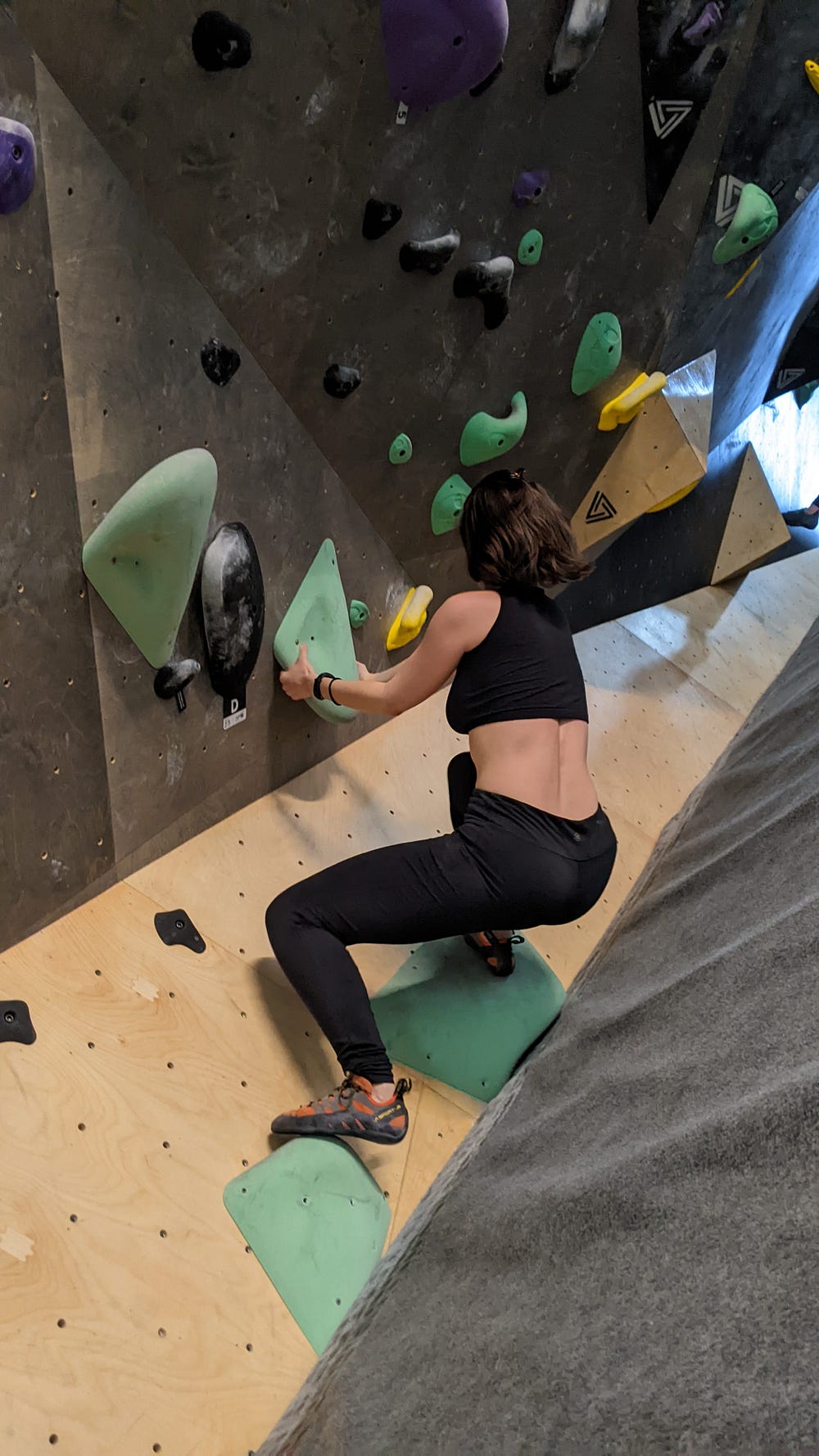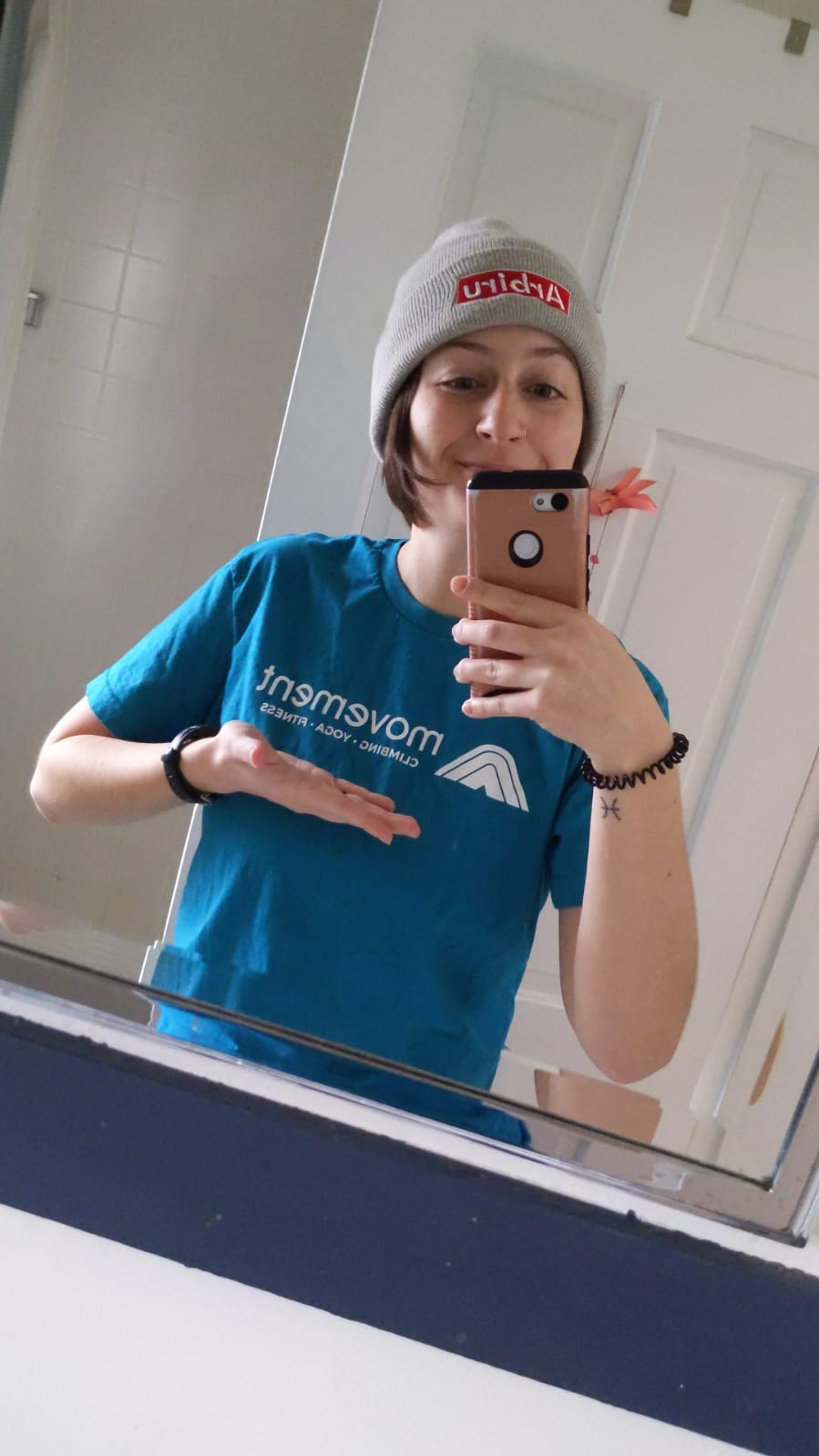As designers, we draw inspiration from many places. I have found that exploring the world around me with a curious mind has taught me more about being a UX designer than my day-to-day work in this field. I’ve already talked about how sailing the Chesapeake Bay has taught me several design lessons — here are a few lessons I have learned as a rock climber.
Own your mistakes.
Owning mistakes builds resilience, increases knowledge, and makes room for personal and professional growth. In rock climbing, we talk a lot about mental toughness — and owning mistakes is a big part of practicing this. This is key to rock climbing, and has become central to my work as a UX designer.
When doing any kind of climbing, it is encouraged to think critically about what you did wrong so that next time you can change tack and do better. If we let our errors on the wall build up without addressing them directly, we actually sow seeds of doubt in our abilities. Designers need to own their decisions (the good and the bad), just as rock climbers need to own every move they make. This builds confidence and makes us better at our craft.

Make thoughtful moves.
As a female rock climber, I’ve come to rely heavily on technique, rather than strength, to climber harder routes or solve bouldering problems. The highly technical aspect is what originally drew me in to rock climbing — it is just as important to use your brain as it is to use your muscles.
As a UX designer, every design decision is calculated and thought out. Designers use data to drive design decisions, and rely on our knowledge and observing those around us to make better design choices. Every move on the wall is thought out — the same goes for user experience design.

Participate in community.
For a brief stint, I worked as a rock climbing instructor in a gym. After climbing recreationally for a couple of years, I decided to follow my curiosity and share my knowledge with others. Most importantly, I wanted to go deeper into the rock climbing community.
UX and rock climbing both have strong senses of community. In fact, this sense of community is rather unique to these industries. When I lean into these communities, I meet so many enthusiastic, intelligent, and friendly folks. They make working (and playing) in this space so much more fulfilling than other industries I’ve spent time in.
Trust your team.
I firmly believe that we do our best work in collaboration with others. Top rope climbing requires a high level of trust and vulnerability with your belay partner, who is managing the rope and keeping you from falling. In user experience design, having a good team to rely on can make or break the success of a project.
While on the wall, trust is placed with much higher stakes. With your team, you are trusting the knowledge and expertise of your peers. We all come from very different walks of life, and varying levels of experience. Trusting each other helps us achieve our best work.

Be bold.
Ultimately, climbing requires a certain level of boldness. You are defying gravity, and pushing your mind and body to new limits. When making a move on the wall, you need to make it with confidence. You have to own your body and mind and go for it.
Designers must also be bold. In many ways, we are reinventing how the digital world is presented to others. I think that takes guts —we have to use our knowledge, gather data, and design something that goes in front of users in the real world. A lot can ride on these design decisions.
Rock climbing and user experience design have a lot in common with one another. Crucial lessons like owning mistakes have made me a better colleague and designer, while lessons in confidence and being bold have spurred career growth. Being in a space that values community and collaboration is a gift, and I feel lucky to have that while hitting the wall or messing around in Figma. I love following my curiosity — you never know what you’ll learn out in the world, away from your desk!